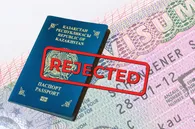On December 28, the Astana Financial Services Authority (AFSA) announced the introduction of a Stablecoin Framework effective January 1, 2024. The framework is designed to ensure the reliability and stability of the digital asset landscape within the jurisdiction of the Astana International Financial Center (AIFC), QazMonitor reports citing the Center’s press service.
Within the Framework, the Authority allows the issuance of fiat stablecoins—digital assets whose value is determined by reference to a fiat currency or a basket of fiat currencies. It covers transactions with G10 currencies (Australian dollar, British pound, Canadian dollar, Euro, Japanese yen, New Zealand dollar, Norwegian krone, Swedish krona, Swiss franc, and United States dollar), Chinese Yuan, and any other currency agreed upon with AFSA. The framework encompasses critical aspects such as reference currencies, capital requirements, redemption rights, composition of reserve assets, and disclosure requirements.
AIFC reports that the use of stablecoins has multiplied in recent years, and as of June 2023, the total market capitalization of stablecoins across all categories stands at $127.59 billion, with fiat stablecoins accounting for the majority of the market share in terms of both market capitalization and trading volume, standing at $119.79 billion.
The trading volume of stablecoins constitutes the majority of the overall trading of digital assets in the AIFC sandbox.
While a key feature of a stablecoin is its lower volatility compared to other digital assets, the collapse of the largest algorithmic stablecoin in May 2022 has shown that it also presents risks that require adequate systems and controls. In this context, the introduction of the Stablecoin Framework is a significant step in fostering a secure and transparent digital asset environment within the AIFC.
The Stablecoin Framework has been developed following the recommendations of the Financial Stability Board, International Organization of Securities Commissions, Basel Committee on Banking Supervision, Committee on Payments and Markets Infrastructures, Financial Action Task Force, and Bank for International Settlements.










